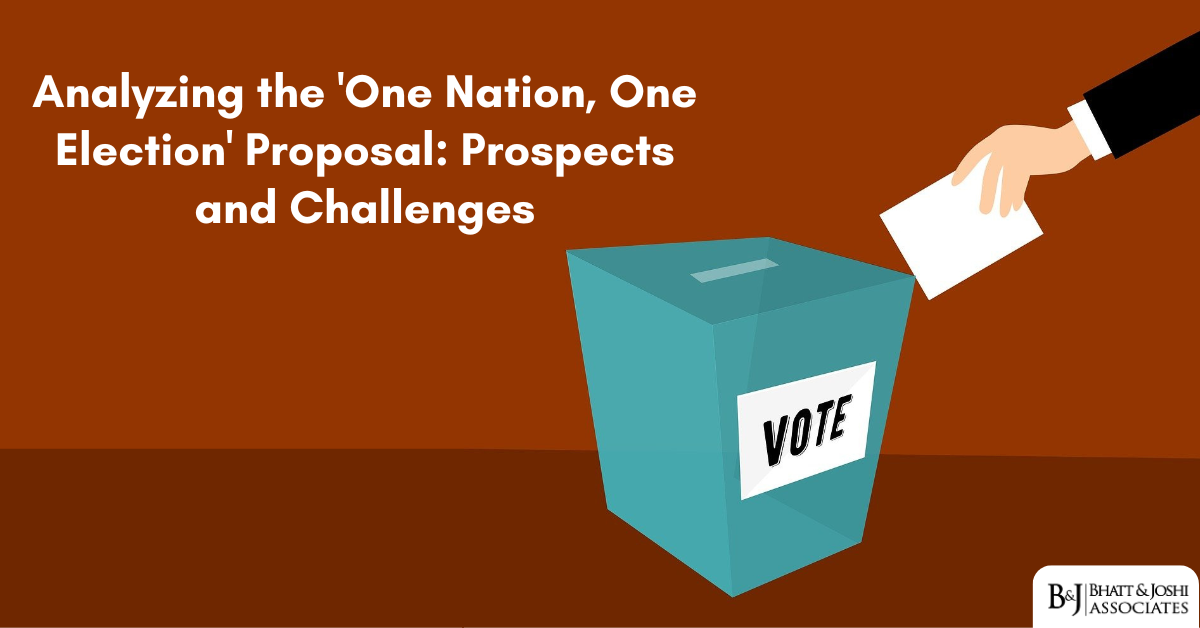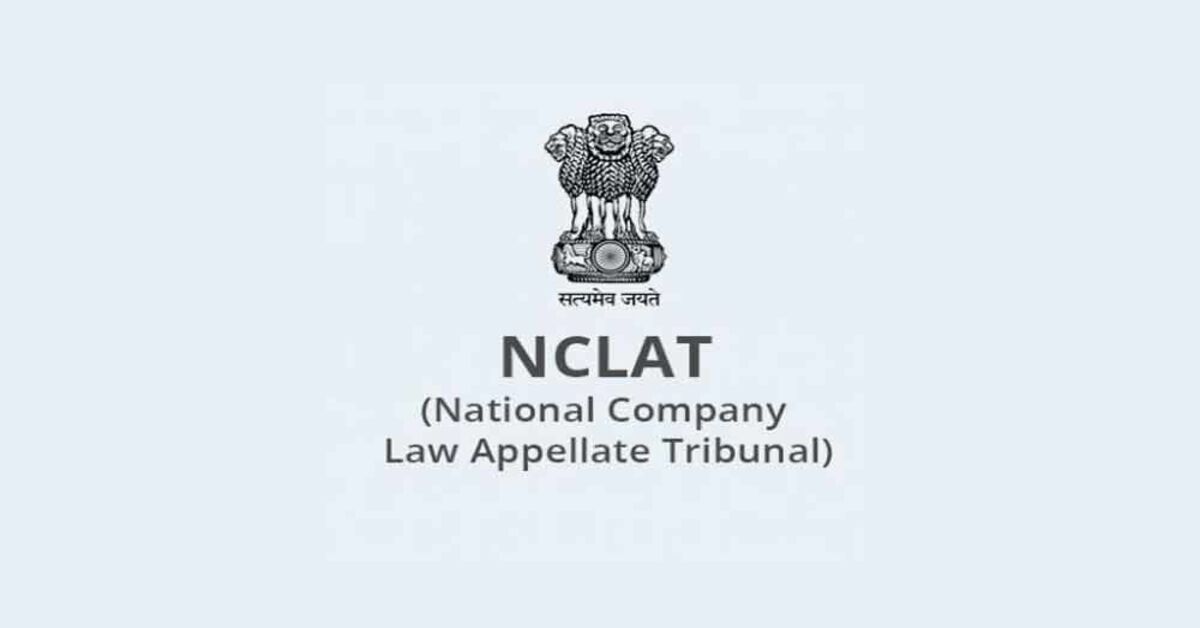Introduction
The concept of “One Nation, One Election” (ONOE) envisions a synchronized electoral process for Lok Sabha (Parliamentary) and State Legislative Assembly elections in India. Advocates argue that this proposal could reduce the financial burden of frequent elections and foster governance stability, while critics raise concerns about its feasibility and potential impact on federalism. This article delves into the ONOE proposal by examining its historical context, implications, benefits, challenges, and the legal framework surrounding its implementation, including case laws and judicial perspectives.
Historical Context of ‘One Nation, One Election’
India’s initial tryst with synchronized elections began post-independence, with the first general elections in 1952. Lok Sabha and State Assembly elections were conducted simultaneously until 1967. However, the dissolution of certain State Assemblies and subsequent mid-term polls disrupted this practice. By 1971, the cycle was completely staggered due to political instability and the dissolution of the Lok Sabha.
The idea of reviving synchronized elections gained momentum in recent years, with political leaders and think tanks advocating for their reinstatement. The Law Commission of India, in its 170th and 255th reports, as well as the NITI Aayog, emphasized the need for electoral reforms to ensure a more coherent electoral calendar. While the historical success of simultaneous elections illustrates its feasibility in a nascent democracy, the evolution of India’s federal polity and the growing importance of regional issues necessitate a nuanced examination of this proposal in the present-day context.
Legal and Constitutional Framework
Implementing ONOE requires extensive amendments to constitutional provisions. Articles 83(2) and 172 of the Constitution govern the duration of the Lok Sabha and State Assemblies, respectively, stipulating a five-year term unless dissolved earlier. Article 85 and Article 174 outline provisions for the dissolution of the Houses and summoning sessions. To synchronize elections, these articles would need amendments to align the terms of various legislative bodies.
The Representation of the People Act, 1951, which regulates election processes, also necessitates amendments to accommodate synchronized elections. Additionally, Article 356 (President’s Rule) might be invoked more frequently to address instances of legislative bodies failing to complete their terms, raising concerns about overreach. Such amendments must carefully balance the principle of federalism enshrined in the Constitution while addressing practical challenges.
Another aspect requiring attention is the delimitation of constituencies. The Delimitation Commission would need to ensure uniformity in representation across constituencies, which becomes critical for maintaining the democratic ethos of the country. Moreover, amendments would have to provide a framework for addressing exceptional situations, such as the premature dissolution of a legislative body, to preserve synchronization.
Judicial Perspectives and Case Laws
The judiciary has deliberated on electoral reforms and synchronization in various instances. For example, in Kuldip Nayar v. Union of India (2006), the Supreme Court underscored the need for electoral integrity and reforms but did not directly address the ONOE concept. The judgment highlighted the importance of ensuring free and fair elections as a cornerstone of democracy.
Similarly, in Indira Nehru Gandhi v. Raj Narain (1975), the Court emphasized the democratic ethos and autonomy of elections. While the case did not pertain to ONOE, its observations on free and fair elections have implications for synchronized electoral systems. The judgment underscored the necessity of protecting the sanctity of elections from undue influence and maintaining the democratic equilibrium between the Union and the States.
The Election Commission of India (ECI) has also expressed its position, highlighting the logistical challenges of implementing ONOE. The ECI, an autonomous constitutional body, is tasked with ensuring transparent and fair elections. It has called for broad consensus among stakeholders, including political parties and civil society, before adopting the ONOE model. Judicial oversight would also play a critical role in ensuring that the transition to synchronized elections adheres to constitutional principles and safeguards.
Prospects of ‘One Nation, One Election’
The ONOE proposal has been lauded for its potential to revolutionize the electoral landscape in India. Among its significant benefits is the potential for economic efficiency. Frequent elections impose significant costs on the exchequer. The ONOE model can potentially reduce expenditure on election management, deployment of security forces, and disruption of public services. According to NITI Aayog, a synchronized system can result in substantial savings, which can be redirected to developmental projects.
Proponents argue that ONOE can also ensure governance stability. Continuous election cycles compel governments to adopt populist measures, often at the expense of long-term governance. A synchronized electoral calendar can provide governments with a stable tenure to focus on policy implementation without electoral disruptions. For instance, the absence of an impending electoral deadline would enable policymakers to prioritize structural reforms and long-term developmental goals.
Another significant advantage lies in enhancing voter engagement. ONOE may simplify the electoral process and reduce voter fatigue, potentially leading to higher voter turnout. A streamlined election schedule could help voters make more informed choices, as they would no longer need to grapple with the complexities of overlapping national and regional campaigns.
Challenges of ‘One Nation, One Election’
Despite its potential benefits, ONOE faces several formidable challenges. One of the most pressing concerns is its potential impact on federalism and state autonomy. Critics argue that ONOE undermines India’s federal structure by prioritizing national over regional issues. The staggered electoral cycle allows state-level issues to be addressed independently, ensuring that regional voices are not overshadowed by national narratives. Synchronization might inadvertently centralize political discourse, undermining the diversity of India’s democratic framework.
The logistical complexities of conducting simultaneous elections across a vast and diverse nation also pose significant hurdles. Ensuring the availability of adequate Electronic Voting Machines (EVMs), deployment of security personnel, and establishment of polling infrastructure requires meticulous planning and substantial resources. The scale of the operation is unparalleled and demands unprecedented coordination among multiple stakeholders.
Achieving the political consensus necessary for ONOE implementation is another significant challenge. Constitutional amendments require a two-thirds majority in Parliament and ratification by at least half of the state legislatures. Given the diverse political landscape, garnering such consensus remains an uphill task. Political parties often have conflicting interests, and their support for ONOE may hinge on their perceived benefits or disadvantages.
Frequent dissolutions and re-elections pose additional complications. In cases of premature dissolution of either the Lok Sabha or a State Assembly, maintaining the synchronization of elections becomes problematic. For instance, if a State Assembly is dissolved mid-term, should elections for that state be deferred until the next synchronized cycle? Such scenarios necessitate legal and administrative clarity. Additionally, prolonged President’s Rule in such states could raise questions about democratic representation.
Comparative Analysis: Global Practices
Several countries, including Sweden and South Africa, conduct simultaneous elections for national and regional legislatures. However, these nations have distinct political and administrative structures that differ significantly from India’s federal framework. Sweden, for instance, operates under a unitary system, which simplifies the coordination of elections. South Africa, while a federal state, has a relatively smaller electorate and fewer administrative divisions, making simultaneous elections more feasible.
While these examples offer valuable insights, their applicability to India’s unique context remains limited. India’s diversity, both in terms of population and geography, adds layers of complexity to the synchronization of elections. Moreover, the socio-political fabric of India, characterized by its vibrant regional parties and issues, necessitates a customized approach rather than a wholesale replication of foreign models.
Recent Developments and Debates
The ONOE proposal has sparked intense debate among political parties, constitutional experts, and civil society. The Standing Committee on Personnel, Public Grievances, Law, and Justice recommended a phased approach to implement synchronized elections. However, the lack of consensus among political stakeholders has hindered progress.
The government’s announcement of committees to explore ONOE’s feasibility reflects its commitment to advancing the debate. These committees, comprising constitutional experts, former Chief Election Commissioners, and policymakers, aim to address legal and logistical challenges while building political consensus. Public consultations and awareness campaigns have also been initiated to educate citizens about the potential implications of ONOE.
Case Studies: State and National Elections
The 2019 general elections and concurrent Assembly elections in certain states, such as Andhra Pradesh and Odisha, offer valuable lessons for ONOE implementation. While these elections demonstrated the feasibility of simultaneous polling, they also highlighted challenges related to voter focus and administrative preparedness. In these cases, regional issues often took a backseat to national narratives, raising concerns about the marginalization of state-level priorities.
Path Forward for ‘One Nation, One Election’
Achieving ONOE requires a multi-pronged strategy encompassing legal reforms, stakeholder consultations, and public awareness campaigns. Incremental implementation through pilot projects in select states could pave the way for broader adoption. For instance, synchronizing elections in a few smaller states with the Lok Sabha elections could serve as a litmus test for the proposal’s viability.
Leveraging technology to streamline electoral processes is another critical aspect. The deployment of advanced EVMs and robust voter authentication systems can enhance the efficiency and credibility of simultaneous elections. Moreover, ensuring a strong security apparatus and infrastructure is essential to address logistical challenges.
Fostering inclusive dialogue is paramount to addressing the concerns of all stakeholders. Political parties, state governments, and civil society organizations must be actively involved in shaping the framework for ONOE. Building consensus through transparent and participatory processes can help mitigate apprehensions and pave the way for its successful implementation.
Conclusion
The “One Nation One Election” proposal presents a transformative vision for India’s electoral system, promising economic efficiency and governance stability. However, its implementation demands careful consideration of constitutional principles, logistical challenges, and the nation’s diverse political landscape. By fostering inclusive dialogue and addressing stakeholder concerns, India can chart a path toward a more cohesive and efficient electoral framework. The success of ONOE hinges on its ability to harmonize the competing demands of federalism, democratic integrity, and administrative efficiency, ensuring that it strengthens rather than undermines India’s democratic ethos.














